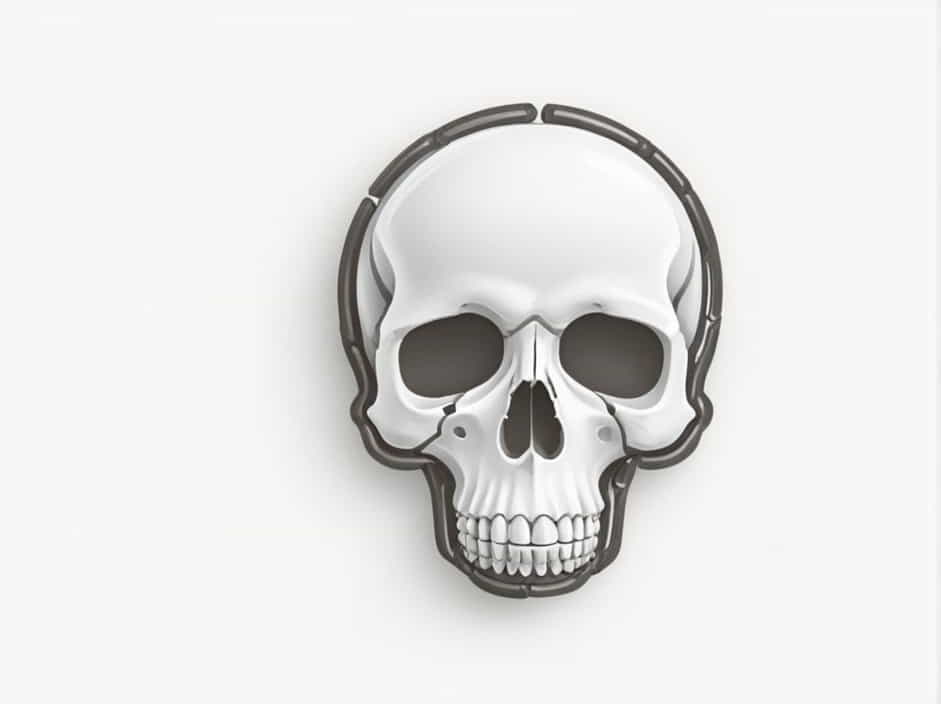The bones connecting the skull to the hip bone form a critical part of the human skeleton known as the vertebral column. This structure, often referred to as the spinal column or simply the spine, serves as the central support system for the body.
The vertebral column not only connects the skull and pelvis, but it also protects the spinal cord, supports posture, and allows for a wide range of movement. In this topic, we will explore the bones involved, their functions, structure, and importance to human health.
What Are the Bones Connecting the Skull to the Hip Bone?
The vertebral column is made up of 33 vertebrae stacked on top of each other. These vertebrae form a bony bridge between the skull (at the top) and the hip bone (at the bottom).
These bones are divided into five main regions, each with its own structure and function:
- Cervical vertebrae (neck region)
- Thoracic vertebrae (upper back)
- Lumbar vertebrae (lower back)
- Sacrum (part of the pelvis)
- Coccyx (tailbone)
Detailed Breakdown of Each Section
1. Cervical Vertebrae (Neck Region)
The cervical spine consists of seven vertebrae labeled C1 to C7. These bones form the connection between the skull and the upper back.
- C1 (Atlas) supports the skull and allows for nodding movements.
- C2 (Axis) enables the head to rotate side to side.
This flexible region allows for head movement in multiple directions while still protecting the spinal cord.
2. Thoracic Vertebrae (Upper Back)
The thoracic spine contains twelve vertebrae, labeled T1 to T12.
- These bones connect to the ribs, forming the rib cage.
- They provide stability to the upper body.
- This section is less flexible than the cervical spine to protect vital organs like the heart and lungs.
3. Lumbar Vertebrae (Lower Back)
The lumbar spine is made up of five large vertebrae, labeled L1 to L5.
- This is the strongest section of the spine because it bears the majority of body weight.
- It connects the upper body to the pelvis.
- The lumbar vertebrae allow for bending, twisting, and lifting movements.
4. Sacrum (Part of the Pelvis)
The sacrum consists of five fused vertebrae forming a triangular bone that sits between the hip bones.
- It connects the spine to the pelvic girdle.
- The sacrum helps transfer weight from the upper body to the legs when standing or walking.
5. Coccyx (Tailbone)
The coccyx is made up of three to five small fused bones.
- It forms the base of the spinal column.
- Though small, the coccyx serves as an anchor point for ligaments, tendons, and muscles.
Functions of the Vertebral Column
1. Provides Structural Support
The vertebral column acts like the main pillar of the human body, keeping the torso upright and aligned. Without it, the body would collapse under its own weight.
2. Protects the Spinal Cord
Inside the vertebral canal, the spinal cord runs from the brainstem down to the lower back. Each vertebra has a central opening to safeguard this delicate nervous tissue.
3. Allows Movement and Flexibility
The intervertebral discs between each bone provide cushioning and allow for bending, twisting, and stretching. This combination of stability and flexibility makes complex movements possible.
4. Transfers Weight to the Lower Body
When standing, walking, or running, the spine transfers upper body weight down to the pelvis and ultimately to the legs. This load-bearing function is essential for mobility.
The Importance of Healthy Spine Alignment
Posture and Balance
A healthy spine maintains a natural S-shape curve. This alignment helps evenly distribute weight across the vertebrae, reducing strain on any one section.
Poor posture, injuries, or spinal misalignments can cause:
- Chronic back pain
- Limited mobility
- Nerve compression
Common Issues Affecting the Spine
1. Herniated Discs
The intervertebral discs act as shock absorbers between the bones. When a disc ruptures or slips out of place, it can press on nerves, causing pain, numbness, or weakness.
2. Scoliosis
This condition involves an abnormal sideways curvature of the spine. Mild scoliosis may not cause symptoms, but severe cases can affect breathing and movement.
3. Degenerative Disc Disease
As people age, the discs lose hydration and elasticity, making them less effective at absorbing shocks. This wear and tear can lead to chronic pain.
The Role of Ligaments and Muscles
The bones connecting the skull to the hip bone do not work alone. They are reinforced by ligaments that hold the bones in place and muscles that control movement. Key muscle groups include:
- Erector spinae (running along the back of the spine).
- Abdominal muscles (providing front support).
- Gluteal muscles (supporting the pelvis).
Exercises to Maintain a Healthy Spine
1. Core Strengthening
Strong core muscles reduce the strain on the vertebrae by providing additional support.
2. Stretching and Flexibility Work
Regular stretching keeps the spine flexible and helps prevent stiffness.
3. Postural Training
Learning how to sit, stand, and move correctly helps preserve the spine’s natural alignment.
Evolutionary Significance
The ability to walk upright is one of the defining traits of humans. The spine evolved to balance flexibility with strength, allowing for bipedal locomotion. This evolutionary change made the vertebral column one of the most important structures in the human body.
Final Thoughts
The bones connecting the skull to the hip bone, known collectively as the vertebral column, form the backbone of human anatomy—literally and figuratively.
These 33 vertebrae, along with their discs, ligaments, and muscles, provide support, protection, and mobility essential for everyday life.
Taking care of the spine through proper posture, exercise, and injury prevention is critical for long-term health and mobility. Understanding how these bones work together helps us appreciate the complexity and importance of this central pillar of the human skeleton.
